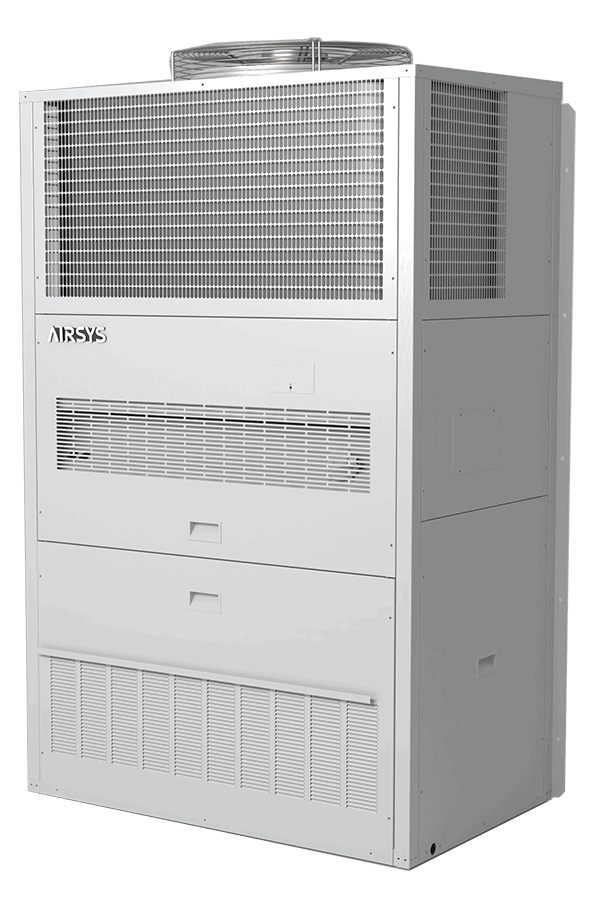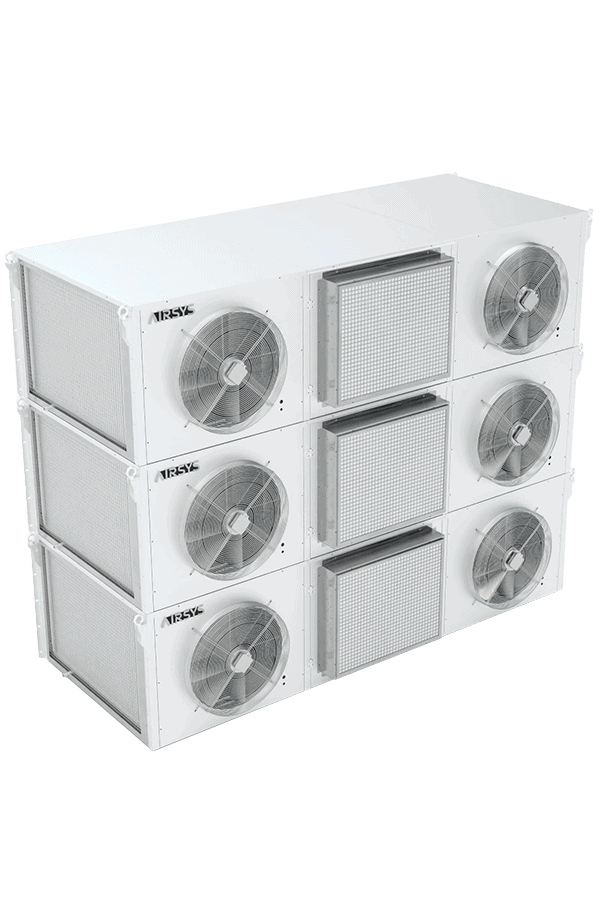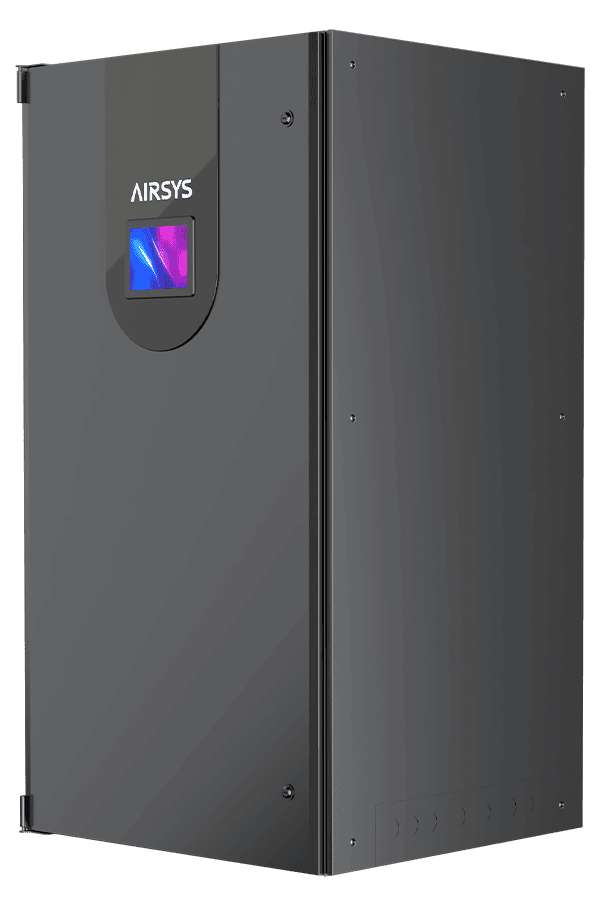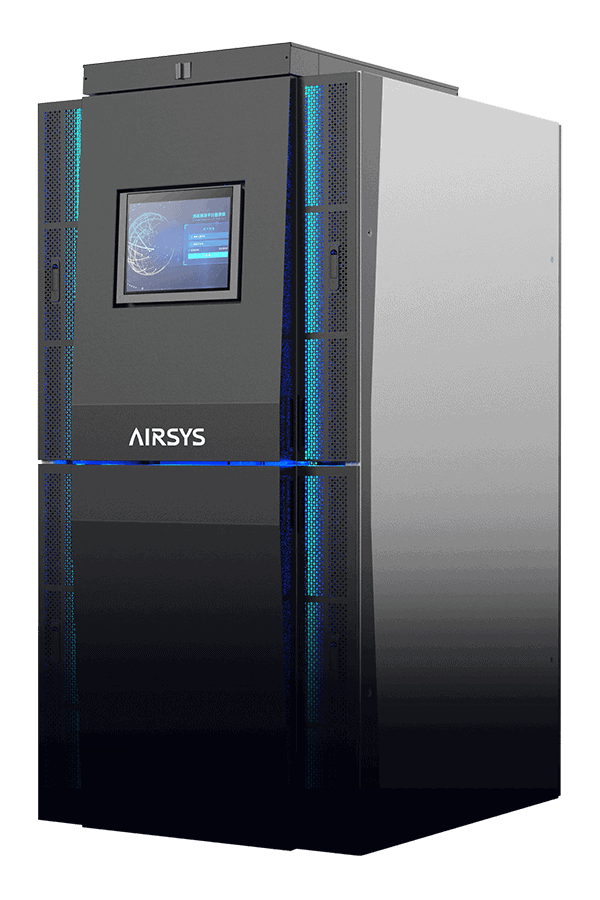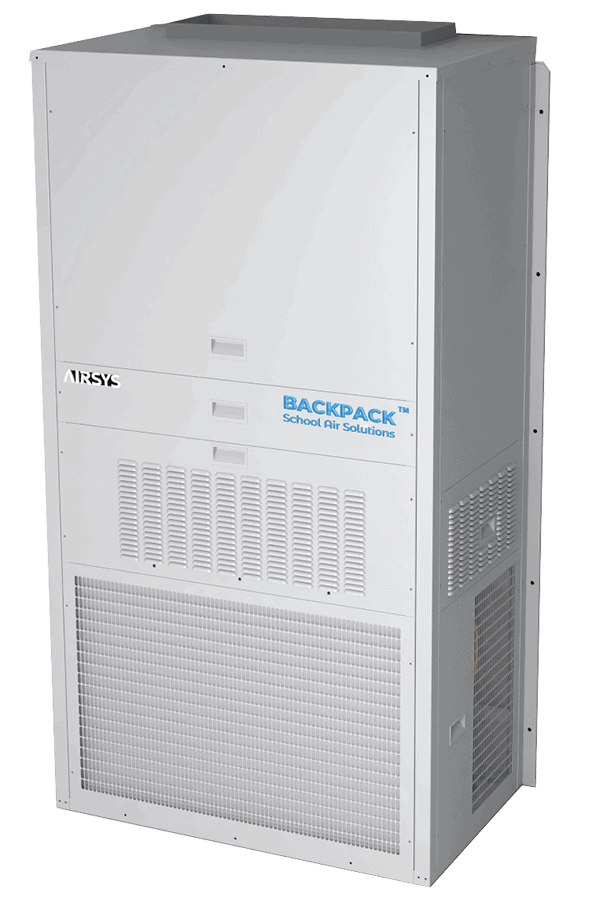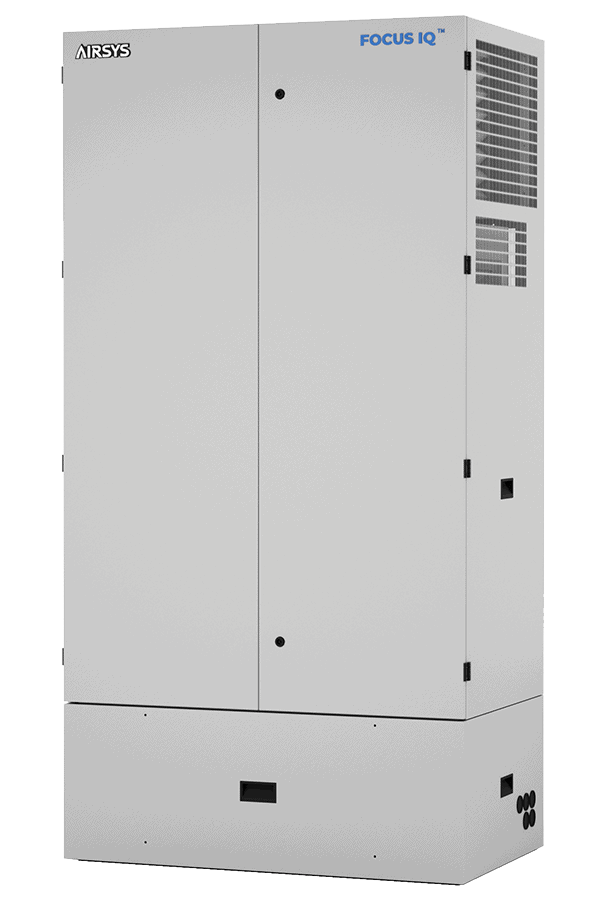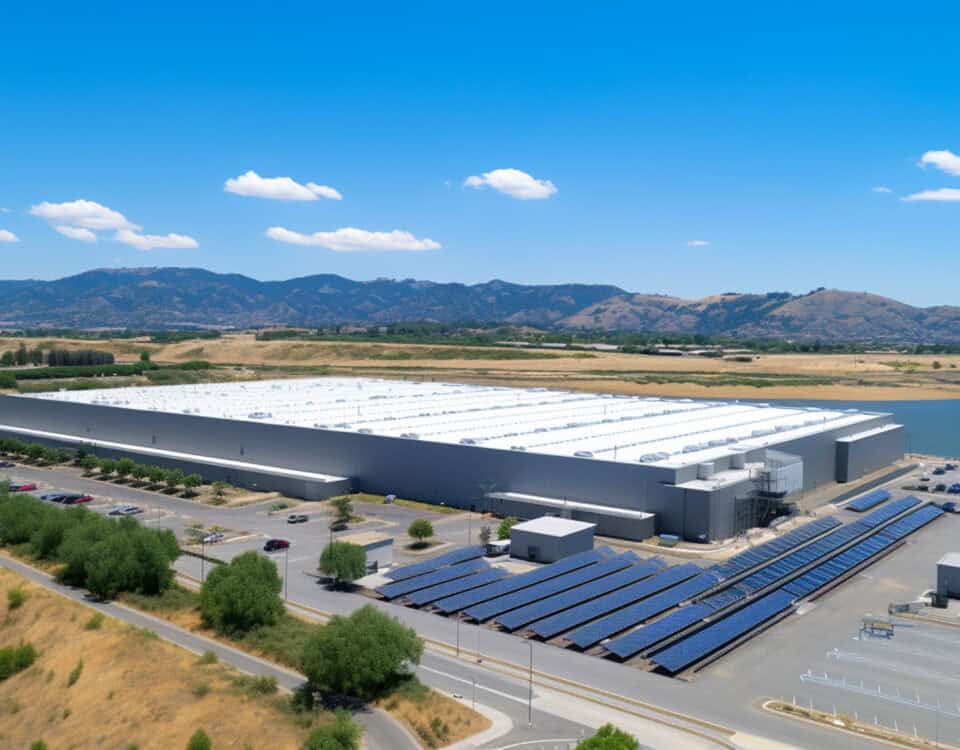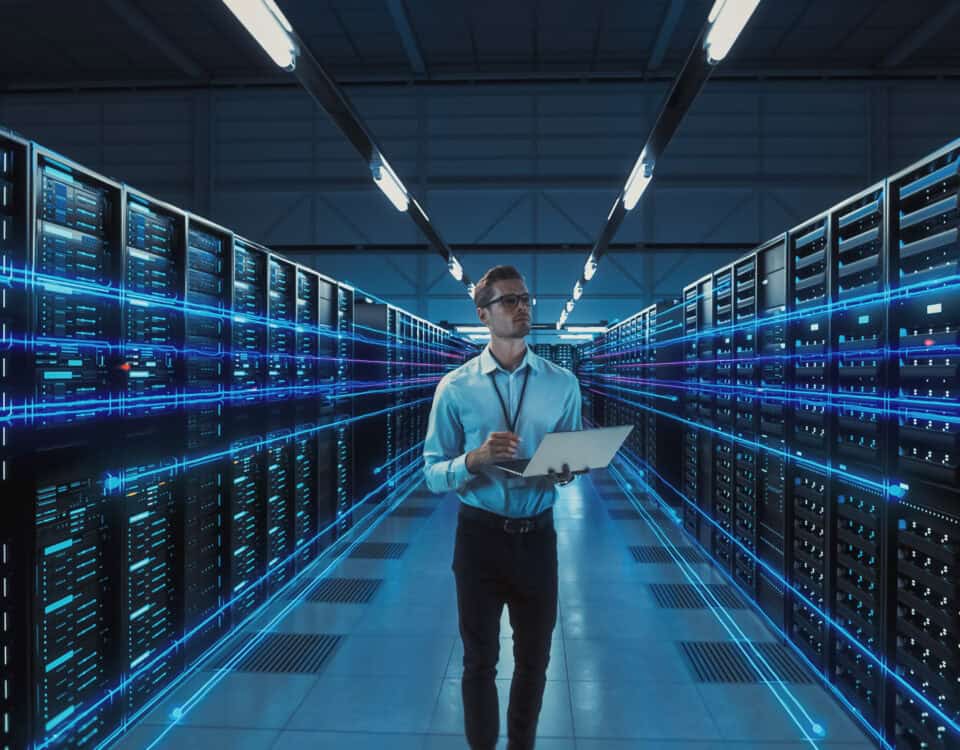
Eco-Friendly Cooling: A Guide for Telecom Operators
December 18, 2024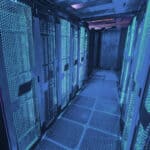
Is Liquid Cooling Worth it for Your Data Center?
January 23, 2025The data center industry is at the heart of a digital transformation, and its rapid evolution shows no signs of slowing down. With worldwide market growth projected to triple by 2034 — rising from $256 billion to approximately $776 billion — staying ahead of emerging data center trends is more crucial than ever.
Advanced cooling technologies are reshaping the data center cooling industry to address the challenges posed by AI workloads, sustainability demands, and rising energy consumption. In this article, we’ll explore the key trends driving the data center industry in 2025 and the innovative cooling technologies leading the way.
AI: The Driving Force Shaping the Data Center Industry in 2025
Artificial intelligence (AI) is no longer just a technological trend. The truth is that AI has emerged as the most transformative force in the data center industry. As organizations worldwide embrace AI technologies for everything from business operations to groundbreaking research, the demand for data has reached historic levels.
As expected, industry forecasts predict an average annual growth of 33% in AI-ready data center capacity from 2023 through 2030. Furthermore, it is estimated that by the end of the decade, approximately 70% of the total demand will revolve around data centers’ capabilities to host sophisticated AI applications.
But what does it practically mean for data centers?
Three AI-Driven Data Center Trends in 2025
The growing demand for AI capabilities places unprecedented pressure on data centers to handle increasingly advanced workloads. This strain shapes data center infrastructure and operational models in three critical areas. These are the drivers and outcomes of data center trends in 2025, both pushing AI support and driving its continued evolution.
1. Performance: Meeting Computing Demands All the Time and Everywhere
As mentioned earlier, the global demand for data is insatiable, and it doesn’t seem to go away. On the contrary. Whether it’s individuals’ expectations for seamless data processing, businesses’ revenue ambitions, or emerging technologies like autonomous vehicles and smart cities, everybody wants data, and they want it now. An Amazon survey found that every 100 milliseconds of latency could cost them 1% of sales, while Google reported that a half-second delay results in a 20% drop in traffic.
This relentless demand for high performance is reshaping data center infrastructure. For instance, hyperscalers are expanding in major hubs to handle massive workloads, and edge data centers are rising to bring processing power closer to end users. Operators now face the challenge of balancing distributed computing needs with the robust infrastructure required for AI workloads, ensuring consistent performance and reliability across their networks.
2. Energy Efficiency: A Strategic Imperative
The computational demands of generative AI are pushing the boundaries of what data centers need to handle. As AI models like ChatGPT continue to grow in complexity and scale, they require extensive training powered by high-density GPU clusters, placing significant strain on traditional data center designs. According to Goldman Sachs Research, in such a reality, data center power demand worldwide is expected to increase 160% by 2030. This leads not only to the exhaustion of energy resources but also to sky-high power bills, making energy efficiency not only a long-term objective but a new mode of operation.
In 2025, prioritizing energy efficiency will no longer be an optional consideration but a critical competitive advantage. Data center operators must adopt strategies like intelligent workload optimization, power-efficient hardware, and integration of advanced energy management systems to meet these demands. For hyperscalers and edge operators alike, energy efficiency will reduce operating costs and ensure investor confidence in an increasingly resource-conscious market.
3. Sustainability: A New Competitive Factor
The surge in data centers’ data processing capacities comes with a parallel surge in data centers’ environmental impact. Specifically, the combination of regulatory pressures, escalating energy costs, and intensified investor scrutiny is compelling data center operators to incorporate sustainability into their core business strategies. With that in mind, in 2025, sustainability is shifting from a nice buzzword to a business driver in the data center industry.
Transitioning to renewable energy sources is at the forefront of this shift, but sustainability efforts extend to every facet of data center operations. By incorporating sustainability into core strategies, data center operators align with global environmental goals and position themselves as leaders in a highly competitive market.
Data Center Cooling Trends in the AI Era
As AI continues to drive data center growth, cooling systems must now manage the immense heat generated by advanced workloads. As such, we expect new cooling innovations and the acceleration of existing trends that tackle the triple challenge of data center performance, efficiency, and sustainability.
Higher Adoption of Liquid Cooling Technologies
Liquid cooling is rapidly transitioning from a niche solution to a mainstream necessity in modern data centers. With 22% of data centers already implementing liquid cooling systems, this technology has become crucial for managing the unprecedented heat generated by GPU clusters. While the initial investment in liquid cooling remains higher than traditional air cooling, its superior energy efficiency, higher cooling capacity, and green cooling features make it increasingly indispensable. Further improvements in liquid cooling are only expected to make these systems more efficient and reliable, paving the way for broader adoption.
Employment of Heat Reuse Techniques
Heat reuse techniques are another approach to data center sustainability, addressing both environmental impact and operational efficiency. By repurposing waste heat, data centers can convert what was once a liability into a valuable resource. The movement is gaining momentum in Europe, where regulatory frameworks actively incentivize heat reuse systems, creating a model for global adoption. This approach not only reduces the overall carbon footprint of data center operations but also creates new opportunities for community integration and resource optimization.
Integrating Analytics to Optimize Cooling
In an ironic twist, AI technology is becoming the solution to the cooling challenges it creates. Advanced analytics and AI-driven monitoring systems revolutionize how data centers approach thermal management. By deploying sophisticated sensor-based temperature monitoring systems, data operators can identify cooling inefficiencies and optimization opportunities with unprecedented precision. This smart approach to cooling management enables real-time adjustments and preventative maintenance, ensuring optimal cooling performance while minimizing energy waste. The technology allows operators to fine-tune their cooling systems based on actual workload demands, creating a more dynamic and efficient cooling infrastructure that can adapt to the varying needs of AI workloads.
Adapting to Data Center Industry Trends
The data center industry is constantly evolving, now at a faster pace than ever before. Those slow to recognize and adapt to these shifts risk falling behind, with dissatisfied users, disappointed stakeholders, and a more significant environmental impact.
As these data center industry trends reshape the landscape, AIRSYS continues to pioneer cooling innovation with solutions already aligned with tomorrow’s challenges. Our LiquidRack™ system is an industry leader in liquid cooling, supported by a comprehensive range of advanced data center cooling solutions. Explore our offerings and contact us to ensure your data center stays ahead of the curve.

